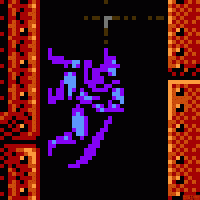Another stunner out of Nottingham.
It’s well established that Games Workshop entered into something of a renaissance back in 2015-2016 with the release of titles like Betrayal at Calth and Warhammer Quest: Silver Tower. Since then, the Warhammer brand has done more than move from strength to strength; it’s modernized, streamlined, and become more accessible. What this means is that each consecutive release seems to build on the last, with a sense of iteration and innovation carried forward. It makes it almost comical- maybe even suspicious- to proclaim “this is the best game GW has ever produced” or “this is the best Warhammer box set to date” with every release. But here we are, and Warcry is in fact the best Warhammer box set to date.
And it is also the best skirmish rule set that the company has ever done – sorry nostalgic Mordheimers, but this is a leaner, sharper, and more focused barracuda of a game. It’s simply stunning in its judicious well-considered streamlining of the core action and process, taking some serious risks along the way. Make no mistake, there will be a contingent of old time Warhammer players that are going to grouse about the game being “dumbed down”, but they are dead wrong. Because it is, in fact, “smarted up”.
Reading the rules, it gave me pause when I realized that the combat was resolved in a single die roll. No tedious three-part to-hit, to-wound, save process. It’s all done in one with allowances built-in for skill, weapon strength, target toughness and the possibility of critical damage. I was also surprised that the unit cards had no elaborate text describing special abilities – just “Runemarks” (i.e. icons) that correspond to a list of abilities activated as a function of the initiative roll. The initiative mechanism calls for you to sort a 6D6 roll into singles, pairs, triads, and quads. Whoever has the most singles has the initiative, but you use the sets to trigger special abilities. And some of these abilities power up based on the 1-6 value of the set. Like the cardplay in Warhammer: Underworlds, this opens up a whole new level of strategic and tactical play beyond movement and positioning while also putting some fun, descriptive attacks in the mix along with meeting the unit differentiation expectation.

Tokens are at a minimum, and there is virtually no administration, bookkeeping, or keeping track of multiple abilities across assorted cards or books. Terrain rules, including movement, couldn’t be simpler and the often troublesome cover rules are just a buff to toughness. The focus is purely on the bone-cracking, skull-splitting, and flesh-rending action on the table.
Lest you be afraid that narrative and depth are lost in the streamlining, be assured that both are present. It’s just that detail is handled more efficiently and the depth doesn’t come from esoteric complexity. Alternating activations keeps the action fluid and fleet, and as in any great skirmish game core competencies include exploiting unit synergies, advantages, and positioning. And you get to pay more attention to those things than to interpreting text or referencing rules.
The in-game action is swift and ruthless – as it should be given the emphasis on some glorious new Chaos faction concepts. But I am also particularly impressed with how the game is framed. Ad hoc scenarios can be set up with set of four card decks that give you a terrain setup suggestion, deployment, victory condition, and a twist. The terrain cards correspond to the included terrain (which is abundant and really more than you need for a single game), and the deployments provide for a whole range of unique scenarios. Part of setup includes organizing your warband into three units: Dagger, Shield, and Hammer. The cards indicate which group goes where and when.
This setup process, in conjunction with a variety of possible objectives on the victory condition cards, already creates a myriad of gameplay possibilities but then there are also Twists. These introduce environmental conditions (like weather), restrictions, and even Chaos Beasts that either player may attempt to command on their activation turn. I love these in particular because it calls to mind one of my favorite elements of Frostgrave: the wandering monsters.
In fact, this game in some ways feels like GW’s answer to Frostgrave, Saga, and other currently popular skirmish games. But the key difference this go-round is that this time, it feels like the team that worked on this game paid more attention to trends outside of the Warhammer bubble – including skirmish-y board games - and worked to make a game that breaks some of the crusty, well-worn molds that have shaped the company’s designs for the past few decades. The sense of dogmatic fealty to atavistic design principles was already in the process of being broken by Age of Sigmar, 8thEdition 40k, and Underworlds, but Warcry pushes the envelope even further. Yet it remains purely Warhammer in every aspect.
I’ve not played through any of the very Warhammer-y narrative campaigns on offer, but the format as presented is quite compelling and represents another iteration moving on from concepts introduced in Age of Sigmar’s Paths of Glory structure. Each faction has a choice of paths they can take, with specific, set battles along them. Each also has traits that can be assigned to favored fighters and special treasures that can be earned. I think this will be a great way to play for groups, and for those looking to bring more than one opponent to the table there are also some viable multiplayer options presented.
As for the product assessment, this $170 box is certainly in the “Cadillac game” range but it is also a tremendous offering that does provide – without reservation, qualifier, or caveat – a complete game experience. The amount of terrain provided is actually more than enough, and although it’s a little disappointing that the bulk of it is of the fatigued “corner ruins” style, there are a couple of absolutely killer pieces including a decapitated statue and a sort of belltower/gallows thing. The two factions included are Iron Golems and Untamed Beasts, and both look stunning. Those who don’t care for modelling should take note that these are not the popular push-fit style models and will need gluing.
I could pick nits that the rulebook isn’t a hardcover or that there’s really no way to build the terrain to match up with all of the terrain cards, but those minor complaints don’t dim the bloody red light this game shines over the skirmish genre. I’ve found myself questioning whether I want to continue at all with other games in this category, including Kill Team, because Warcry encapsulates virtually every single thing I want out of a low model count, small play area miniatures game.
 Games
Games How to resolve AdBlock issue?
How to resolve AdBlock issue? 

























